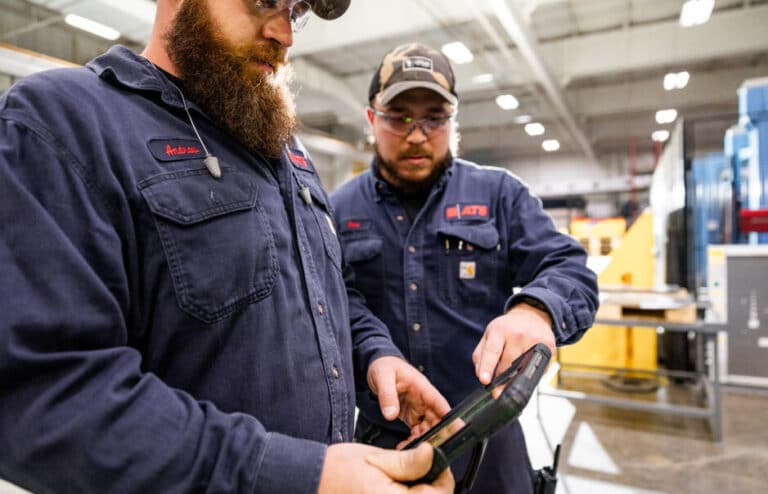Sensors are physical devices that report process variables such as temperature and pressure. They are installed in and around production equipment and used for controlling processes and detecting problems. What are soft sensors? The answer lies in understanding that “soft” is short for “software,” as in “software sensors.”
Sometimes called “inferential” or “virtual” sensors, soft sensors are rapidly becoming a key component of the digital transformation underway in manufacturing. Their uses include improved process control, detection of sensor problems, and operation of digital twins. This blog introduces soft sensor technology so readers can consider how and where they should be used.
What are soft sensors?
Like physical sensors, soft sensors report measurement data. The difference is, they are implemented in software. Rather than sensing and reporting flow, humidity, heat or other variables, they calculate what the reading would be if it was measured at a specific location in the process or machinery.
There are two approaches to performing the calculations needed and arriving at the measurement value. Many soft sensors use an algorithm to determine the value of a variable. This could be as simple as calculating a correlation or as complex as applying a Kalman filter. Other soft sensors use neural networks that combine the influence of multiple physical measurements.
In both approaches, software infers the value of the “measured” variable from other inputs, hence the term, “inferential sensor.” Being implemented as software rather than hardware, they are also sometimes referred to a “virtual sensors.”
Soft sensors have a different role to that of machine monitoring sensors. The latter provide information on equipment health, condition and performance, and are used to drive advanced preventive maintenance strategies.
In contrast, soft sensor applications include:
- Monitoring physical sensor performance (a digital twin of the sensor)
- Estimating values when physical measurements are not available
- Predicting parameters that cannot be measured directly
Soft sensors in manufacturing and maintenance
In the modern factory, data is essential for optimizing equipment performance and availability and ensuring the quality of the product being manufactured. As factories adopt digital technologies, these sensors are being equipped with signal processing and communication capabilities that turn them into Industrial Internet of Things (IIoT) sensors and measurements into information.
Soft sensors supplement and complement the physical IIoT sensors used for process monitoring and control in the following ways:
- Provide rapidly updated measurements when physical sensors respond slowly
- When sampling or offline analysis is the only way to obtain measurement data
- When hazardous conditions make physical sensors impractical
- In situations where it’s impossible or prohibitively expensive to retrofit physical sensors to existing equipment
- As a way of monitoring the operation of physical sensors (by detecting deviations between calculated and actual measurements)
Examples of ways in which soft sensors are used include:
- Continuous estimation of yields in processes such as chemical production and semiconductor material manufacturing
- Measuring energy consumption during casting (which is influenced by factors such as ambient temperature and humidity and mass of alloy)
- Continuous optimization of electric motor efficiency (by inferring the temperature of internal components)
- Real-time fault detection in electric motors
In addition, soft sensors enable the use of a digital twin that replicates a piece of physical machinery in the virtual world. Digital twins are used to predict maintenance needs, for operator and maintenance technician training, and to explore process optimization ideas. In a digital twin, a virtual sensor calculates what a measurement or reading would be, based on multiple inputs.
Benefits of using soft sensors
Used in manufacturing as described above, soft sensors have many benefits.
These include:
- Improved process control: When data is available in real-time rather than at a low frequency or with a lag, processes can be held within narrower limits.
- Reduce waste: A result of improved process control, plus avoiding the need for destructive testing or analysis. This might only take place after manufacturing a lot of product.
- Obtain more data from existing equipment: A soft sensor enables a form of retrofit to get more data from machinery already in place.
- Avoid downtime due to sensor faults: Without a soft sensor that indicates what the measurement should be, an out-of-range reading from a physical sensor will require investigation by the maintenance team.
Helping manufacturers improve operational performance
Data is the cornerstone of efficiency and OEE improvement in the modern factory. That data comes from sensors installed in and around the manufacturing and processing equipment. In some situations, though, either the most valuable data isn’t available, or it’s not delivered with the speed, frequency and quality needed to be useful. When this happens, the solution is to use soft sensors.
If soft sensor technology is new to your business, a simple explanation is to say that soft sensors use sophisticated algorithms to infer data from other sources. This can be less expensive than installing new IIoT sensors, can identify when a physical sensor has gone bad, improves process control, and supports the use of digital twins.
As a leader in industrial maintenance and MRO, ATS stays up to date with advances that help manufacturers achieve their OEE and productivity goals. Soft sensors are one of those advances. Contact us for more information.


